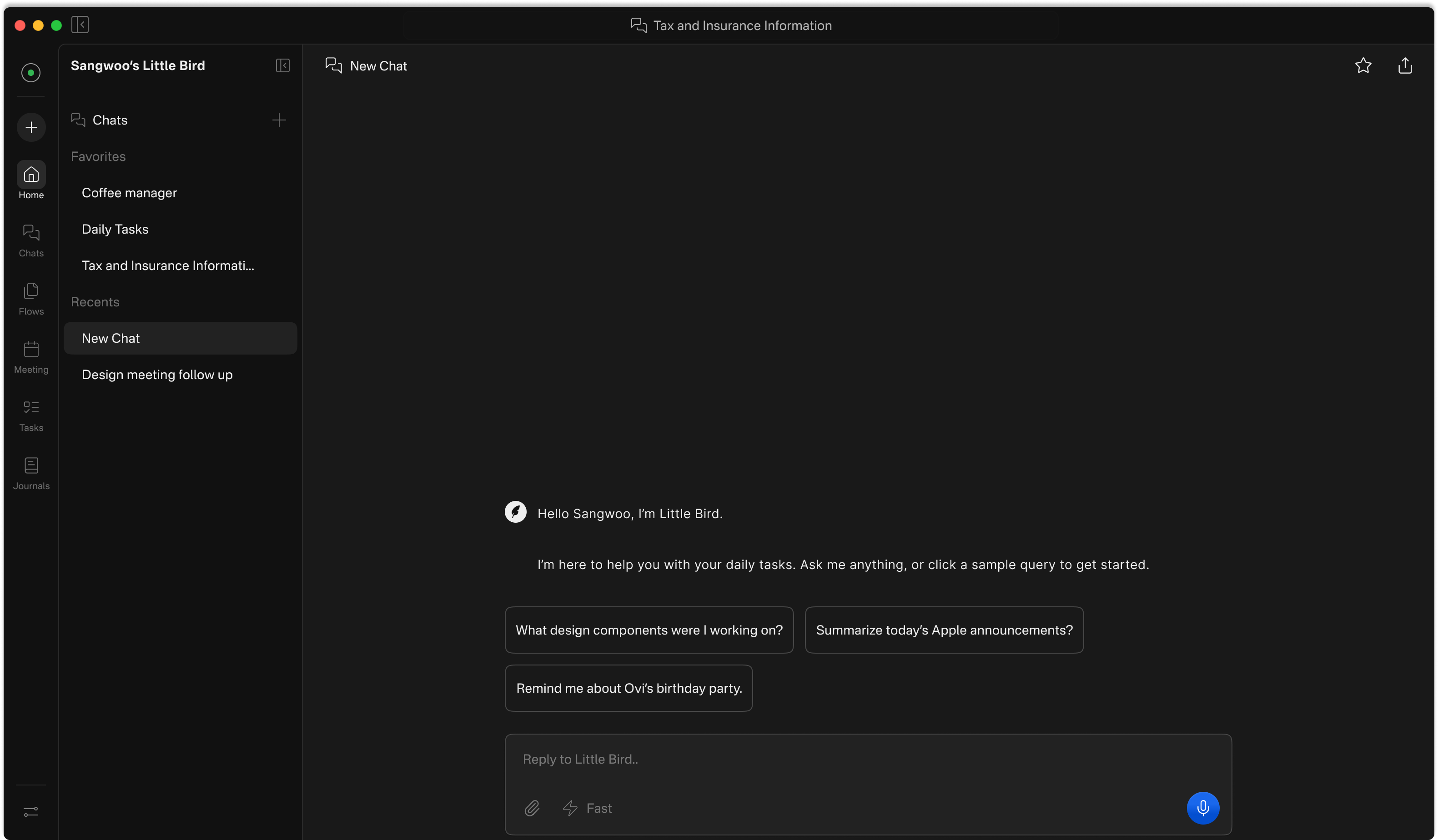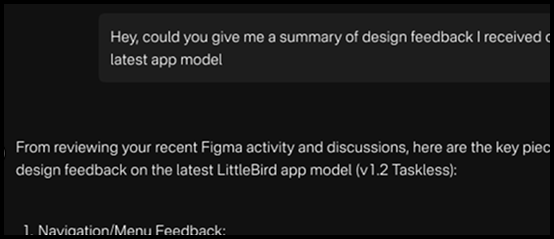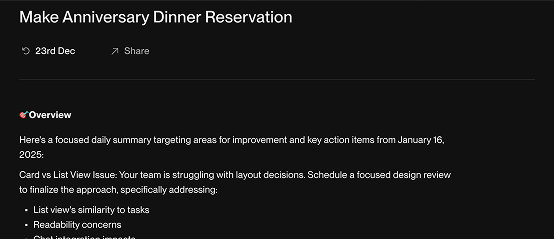Little Bird
Organization: Little Bird
Time: 01.2025 -
Project Team: Sangwoo Han (Product Designer), Alex Green (CEO, Co-founder), Dmitriy Vasilyuk (AI Engineer), Victor Aremu, Rahul Ranjan, Sibi Sharanyan (Front-end Engineers)

What is Little Bird?
Little Bird is an AI personal assistant architected for task, project, and idea management. Its operational core involves leveraging macOS screen reader accessibility features to programmatically interpret and fetch data from various user-permitted application sources, rather than relying on direct application integrations. This method of data acquisition allows Little Bird to build contextual understanding from content such as notes and messages. Based on this derived context, the system facilitates proactive deadline reminders, information retrieval, and brainstorming support. User interaction is conducted via natural language processing. The overarching design objective is the enhancement of organizational efficiency and productivity.
Try Little Bird
The Challenge: Redefining AI Interaction
Traditional AI assistants often feel fragmented or purely transactional. The challenge was to design an experience where AI conversations felt like the central, most intuitive way to interact, rather than an add-on feature. How could we make complex AI capabilities easily accessible and genuinely helpful in a user-friendly interface?
My Role & Responsibilities
As a Product Designer on the Little Bird project, I was responsible for:
- Shaping Product Strategy: Collaborating with product managers and engineers to define the vision and strategic direction for Little Bird, focusing on user needs and market opportunities.
- End-to-End Product Design: Leading the design process from initial concept and research through to detailed UI/UX design, prototyping, and final visual design. This included user flows, wireframes, high-fidelity mockups, and interactive prototypes.
- Building Design Systems: Developing and implementing a comprehensive design system to ensure consistency, scalability, and efficiency across the Little Bird platform.
The Approach & Design Process
Little Bird’s three key feature areas



- Chat : An LLM-powered conversational interface. Provides context-aware responses
- Tasks: AI-powered task suggestions based on user contexts. Offers lightweight task management system
- Journals: Intelligent daily logging that automatically captures and organizes important moments, decisions, and progress
Before State
- The original design had Chat, Tasks, and Journals siloed in separate tabs
- While each feature showed promise individually, they weren't working together as a unified experience, limiting their collective potential
- LLM products’ power lies in their unpredictability and fluidity, yet this same quality makes them difficult to approach.
- Although any attempt to reduce this cognitive load through structured prompts or chat recommendations inevitably constrains the very flexibility that makes LLMs revolutionary
What does it mean to design for an LLM product, when the interface itself is the technology?
Design Goals
- Approachable: Build frameworks that make AI more approachable while preserving its full potential
- Systematic: Create foundational design patterns that grow with the product
- AI minimalism: Simplify through AI-driven interactions, not interface elements
Conceptualizing the "Dual Layout": The Heart of Little Bird
To make AI-powered conversations the core experience, we conceptualized and designed a unique "Dual Layout." This layout separates conversational history and active input/output areas, allowing users to easily follow the flow of interaction while simultaneously seeing contextual information or results. The primary goal was to reduce cognitive load and make interactions feel more fluid and intuitive than traditional chat interfaces, as well as provide “materials for conversations” with AI.
Developing the Little Bird Design System
To ensure consistency and scalability, I spearheaded the development of a comprehensive design system. This included defining color palettes, typography, iconography, spacing guidelines, and a library of reusable UI components. The design system accelerated the design and development process and ensured a cohesive user experience across all touchpoints.